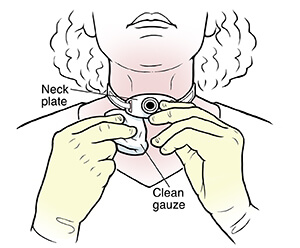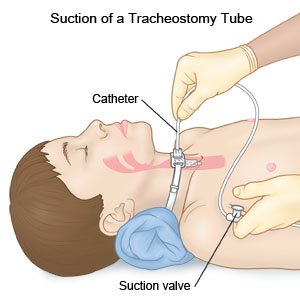Cleaning the stoma is an essential part of stoma care following ostomy surgery. While it may seem daunting at first, with proper technique and care, it can become a routine part of your daily hygiene regimen. Here are some tips on how to clean the stoma effectively:
- Use gentle materials: When cleaning the stoma, avoid using harsh or abrasive materials that could irritate the skin. Opt for soft medical wipes or soft cotton wool to gently cleanse the area.
- Use lukewarm water: Tap water at a lukewarm temperature is sufficient for cleaning the stoma. Avoid using hot or cold water, as extreme temperatures can be uncomfortable or irritating to the stoma and surrounding skin.
- Avoid soap: While it’s important to keep the stoma clean, you should avoid using soap when cleaning it. Soap can be harsh and may irritate the delicate skin around the stoma. Stick to water-based cleansing methods to avoid any potential irritation.
- Be gentle: When cleaning the stoma, handle it with care and avoid applying too much pressure. Gently wipe the area using soft, circular motions to remove any debris or residue.

- Pat dry: After cleaning the stoma, gently pat the area dry with a soft towel or cloth. Avoid rubbing or scrubbing, as this can cause friction and irritation to the skin.
- Inspect the skin: Take the time to inspect the skin around the stoma for any signs of irritation, redness, or inflammation. If you notice any abnormalities, consult your healthcare provider for further guidance.
- Change appliances as needed: Depending on your individual needs, you may need to change your ostomy appliance regularly. Follow your healthcare provider’s recommendations for appliance changes to maintain optimal stoma hygiene.
Remember, everyone’s experience with stoma care may vary, so it’s important to find a routine and products that work best for you. Don’t hesitate to reach out to your healthcare provider or stoma nurse if you have any questions or concerns about stoma care. With time and practice, you’ll become more comfortable and confident in caring for your stoma.
Cleaning and caring for the stoma area, especially after undergoing ostomy surgery, is crucial for maintaining hygiene and preventing skin irritation or infection. Here’s a step-by-step guide on how to clean the stoma and the surrounding skin:
- Use warm water: To clean the skin around the stoma, simply use warm water and a soft washcloth or good-quality paper towels. Gently pat the area to remove any debris or residue.
- Avoid soap: While some individuals may choose to use a very mild soap, it’s generally best to avoid using soap or cleansers with oils, fragrances, or antiperspirants. These can potentially cause skin problems or prevent your skin barrier from sticking properly.
- Rinse thoroughly: If you do use soap, make sure to rinse the soap off the skin around the stoma very well. Soap residue can interfere with the adhesion of your skin barrier and may lead to skin irritation.
- Remove any paste: If you’re using a skin paste, it may be easier to remove it before dampening the area. You can use adhesive remover if needed, but be sure to clean the skin well with water and mild soap afterward to remove any oily residue.

- Dry thoroughly: Always make sure to dry your skin well before applying a new pouching system. Moisture on the skin can interfere with the adhesion of your skin barrier and may lead to skin irritation or breakdown.
- Avoid harsh chemicals: Do not use alcohol or any other harsh chemicals to clean your skin or stoma, as these can irritate the skin and may cause discomfort.
- Avoid certain wipes: Do not use baby wipes or towelettes that contain lanolin or other oils, as these can interfere with the adhesion of your skin barrier and may cause skin irritation.
- Be gentle: The stoma tissue contains small blood vessels and may bleed a small amount when cleaned. Use a gentle touch when cleaning around the stoma and avoid scrubbing, as this can cause irritation or damage to the skin.
- Report any bleeding: If you notice persistent bleeding that doesn’t stop, be sure to report it to your healthcare provider for further evaluation.
- Avoid powders or creams: Unless specifically recommended by your healthcare provider, avoid using powders or creams on the skin around your stoma, as these can interfere with the adhesion of your skin barrier.
By following these steps and maintaining proper hygiene, you can help keep your stoma and the surrounding skin clean and healthy. If you have any questions or concerns about stoma care, be sure to consult your healthcare provider for personalized guidance.
Cleaning the tracheostomy inner cannula tube is essential for maintaining airway hygiene and preventing complications such as mucus buildup or infection. Here’s a detailed guide on how to clean the inner cannula tube:
Equipment Needed:
– Trach care kit.
– Small brush or pipe cleaners.
– Half-strength solution of hydrogen peroxide (1/2 water, 1/2 hydrogen peroxide).
– Saline or homemade sterile salt water.
– Two small bowls.
Procedure:
1. **Wash your hands:** Before starting the cleaning process, ensure that your hands are clean to prevent introducing any bacteria or contaminants.
2. **Prepare cleaning solutions:** Pour half-strength hydrogen peroxide solution into one bowl and sterile saline or salt water into the second bowl.
3. **Remove inner cannula:** While holding the neck plate of the trach still, carefully remove the inner cannula from the tracheostomy tube.
4. **Soak in hydrogen peroxide:** Place the inner cannula in the bowl containing the hydrogen peroxide solution and allow it to soak until any crusts or debris are softened or removed.
5. **Clean the inner cannula:** Use a small brush or pipe cleaner to clean the inside, outside, and creases of the inner cannula. Avoid using scouring powder or abrasive materials, as these can damage the cannula.
6. **Inspect for cleanliness:** After cleaning, inspect the inner cannula to ensure that it is free of mucus and debris.
7. **Rinse with saline:** Rinse the inner cannula thoroughly in the bowl containing saline or sterile salt water to remove any remaining hydrogen peroxide solution.
8. **Re-insert inner cannula:** While holding the neck plate of the trach still, carefully re-insert the inner cannula into the tracheostomy tube.
9. **Lock into position:** Turn the inner cannula until it locks into position. Gently pull forward on the inner cannula to ensure that it is securely locked in place.
10. **Dispose of cleaning materials:** Dispose of any used cleaning materials and ensure that all equipment is properly cleaned and stored for future use.
By following these steps, you can effectively clean the tracheostomy inner cannula tube and maintain proper airway hygiene. If you have any concerns or questions about tracheostomy care, be sure to consult your healthcare provider for guidance.
For proper stoma management, it’s important to have the following products readily available:
- Wipes: Keep plenty of wipes on hand for cleaning around the stoma and dealing with leaks. Opt for dry wipes that can be dampened with clean warm water before use. Avoid using paper towels or tissues, as they may leave residue.
- Mild Soap: Use mild, non-perfumed soap to cleanse the stoma and surrounding areas if visibly soiled or if feces is caked around the perimeter. Avoid using bath soap or other harsh soaps that may cause irritation.
- Shower Protector: Consider using a stoma shower protector if you prefer to shower with your pouch off. This protects the stoma from perfumed shower gels or bubble bath soaps and prevents waste from leaking into the bath water.
- Deodorant: Keep a deodorant handy to manage odor during stoma care. Spray a few bursts around the abdominal area before removing the colostomy bag and while cleaning the stoma. This helps to minimize odor, especially in public settings.
- Antiperspirant: In addition to deodorant, consider having antiperspirant available for managing moisture around the stoma. Apply a few spurts around the abdominal area before bag removal or changing to help keep the area dry.
By having these products readily available, you can effectively manage and care for your stoma with ease and comfort.
See some of our Stoma Care Products and Labex Electrolarynx Devices!
Please consider joining our Labex Support Center for Laryngectomee FB group:.
https://www.facebook.com/groups/801546370394224.



